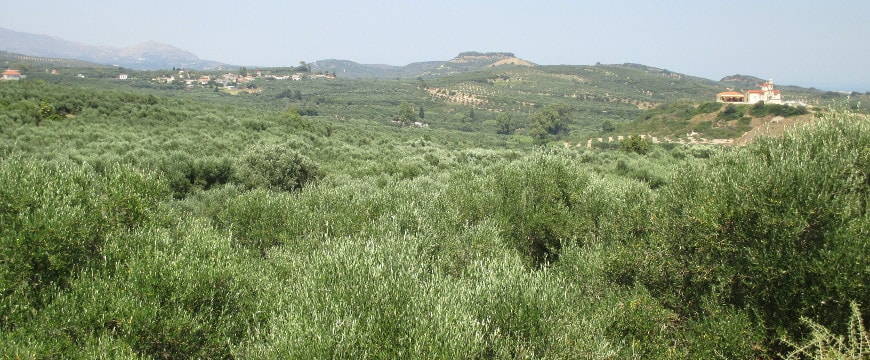“PDO” and “PGI” designate products linked to specific parts of Europe, as defined by the European Commission. The designations are meant to help avoid confusion over inappropriate claims about product origins. “PDO” stands for Protected Designation of Origin (Italian: Denominazione di Origine Protetta, or DOP). “PGI” means Protected Geographical Indication.
There are 30 registered PDOs and PGIs for Greek olive oils. The Greek Ministry of Rural Development and Food has not yet added to its list the latest Greek olive oil PDO (Elaiolado Makris), but you can see the rest listed by clicking on “Olive oil – olives” on the Ministry’s website.
The following information about European quality schemes, which include PDOs and PGIs, is copied from the European Commission (EC) website under the Creative Commons Attribution 4.0 International (CC BY 4.0) license. (Some boldfacing has been added for emphasis.) To see the images on labels associated with PDO and PGI designations and find out more about other European quality and certification schemes, go to the EC website.
Aims of EU quality schemes
EU quality policy aims at protecting the names of specific products to promote their unique characteristics, linked to their geographical origin as well as traditional know-how.
Product names can be granted with a 'geographical indication' (GI) if they have a specific link to the place where they are made. The GI recognition enables consumers to trust and distinguish quality products while also helping producers to market their products better.
Products that are under consideration or have been granted GI recognition are listed in quality product registers. The registers also include information on the geographical and production specifications for each product.
Recognised as intellectual property, geographical indications play an increasingly important role in trade negotiations between the EU and other countries.
Other EU quality schemes emphasise the traditional production process or products made in difficult natural areas such as mountains or islands.
Geographical indications
Geographical indications establish intellectual property rights for specific products, whose qualities are specifically linked to the area of production.
Geographical indications comprise of:
• PDO – Protected Designation of Origin (food and wine)
• PGI – Protected Geographical Indication (food and wine)
• GI – Geographical Indication (spirit drinks and aromatised wines).
The EU Geographical indications system protects the names of products that originate from specific regions and have specific qualities or enjoy a reputation linked to the production territory. The differences between PDO and PGI are linked primarily to how much of the product’s raw materials must come from the area or how much of the production process has to take place within the specific region. GI is specific for spirit drinks and aromatised wines.
Protected designation of origin (PDO)
Product names registered as PDO are those that have the strongest links to the place in which they are made.
Products
Food, agricultural products and wines
Specifications
Every part of the production, processing and preparation process must take place in the specific region.
For wines, this means that the grapes have to come exclusively from the geographical area where the wine is made.
Example
Kalamata olive oil PDO is entirely produced in the region of Kalamata in Greece, using olive varieties from that area.
Label
– Mandatory for food and agricultural products
– Optional for wine
Protected geographical indication (PGI)
PGI emphasises the relationship between the specific geographic region and the name of the product, where a particular quality, reputation or other characteristic is essentially attributable to its geographical origin.
Products
Food, agricultural products and wines
Specifications
For most products, at least one of the stages of production, processing or preparation takes place in the region.
In the case of wine, this means that at least 85% of the grapes used have to come exclusively from the geographical area where the wine is actually made.
Example
Westfälischer Knochenschinken PGI ham is produced in Westphalia using age-old techniques, but the meat used does not originate exclusively from animals born and reared in that specific region of Germany.
Label
– Mandatory for food, agricultural products
– Optional for wines


